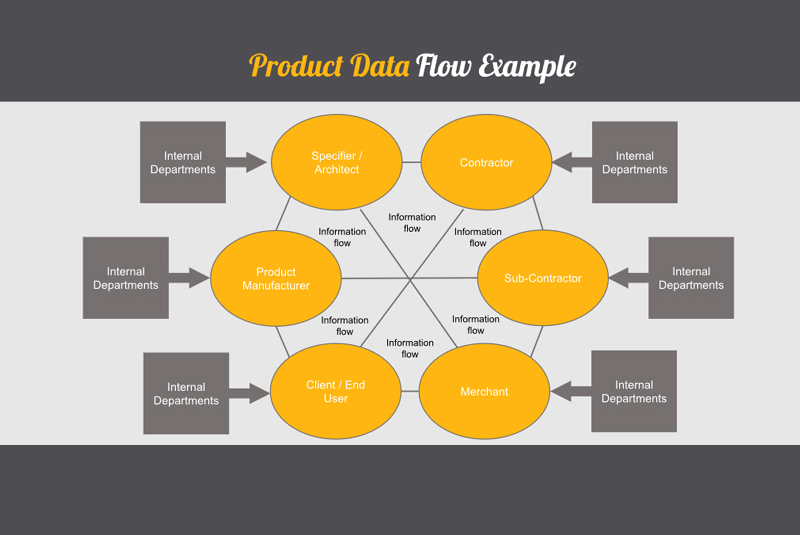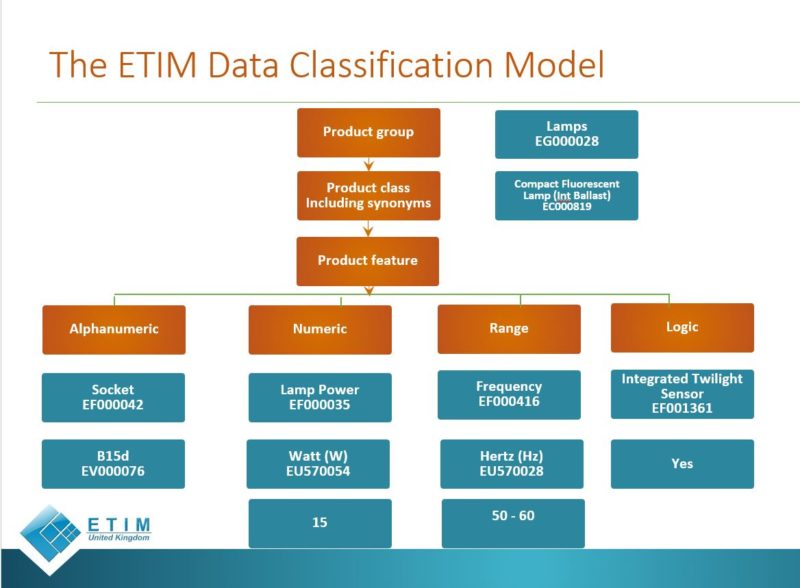
Stuart Dinnie, MD of Pauley Creative, asks: “Will standardised product data drive digitalisation in the construction industry?
The ability to research, compare and buy products has become even easier in our personal and work lives. Equally, it is an opportunity that has been identified in other B2B industries, where they have already become privy to the importance of having structured product data so end users can easily identify and buy products online.
And whilst the use of structured product data isn’t something that has been adopted to a great extent in construction, the shift toward ‘digital transformation’ in the sector has been gaining momentum in the last few years. A recent initiative from the BMF (and backed by NMBS) aims to push this forward even further by implementing structured product data using the ‘ETIM standards’ with the aim of improving efficiencies throughout the supply chain.
ETIM standards
To begin to understand the ETIM standards, we must first be clear on what is meant by “product data”. When a product is produced, you must specify key taxonomies relating to that product so it is easily identifiable by a number of different parties. These unique classifications can include a description, size, weight, material, colour, uses, price and so on.
The ETIM standards were originally developed for the Dutch electro-technical sector, but have steadily expanded into different industries and countries. Now, the ETIM Technical Information Model (adapted from ‘Electro-Technical Information Model’ when it first launched in 1991) has been adopted by manufacturers and wholesalers in 20 countries across Europe, the US and Canada as an open-source data model for the standardisation and classification of product data.
The BMF is the Sector Lead for ETIM UK and will be working to introduce the standards into the UK Building Materials, HVAC & Sanitary sectors — meaning wherever you sit in the construction industry, this initiative will likely affect how you manage, store and share product data.
The ETIM model offers the unambiguous grouping and specification of products and the data is consistently structured to allow it to be easily transferred from one system to another, industry-wide. The standardisation of product data will ensure language and taxonomies are consistent (for example, ‘roof lights’ as opposed to ‘roof windows’) so data can easily be transferred across companies, systems and channels.
Currently, there is no agreed standard for presenting technical product information which is causing manufacturers, merchants, contractors and so on to spend time re-working product data to meet their requirements. Product data is created, stored and shared in a variety of different ways across the industry — and can change depending on the product type, the company producing the data, or the use of the data.
This lack of consistency has resulted in ambiguity and inefficiencies across the breadth of the construction industry. Yet as the industry shifts towards digitalisation, data will be key to a seamless transition into the online world. For example, a recent BMF survey identified that 65% of respondents planned to launch or increase online business in the next two years, and 53% said that they have difficulty obtaining product data from their suppliers in an easily usable format.

ETIM advantages
As all data follows the same principles, there are expected to be major time and cost savings when transferring or using data — for example, reduced errors when transferring data from one source to another due to less human interaction. Furthermore, data can be easily translated into sales-driving content as all parties will be “singing from the same hymn sheet” and users get more consistent and accurate product information.
The challenge, of course, is that onboarding the whole industry to use the same standards is a huge task. Each company will have their own processes which will take time to change, or there may be resistance to change.
ETIM standards and websites
For those showcasing or selling products online, it is important to consider your website’s SEO performance regardless of ETIM. However, considering the introduction of ETIM standards makes it a perfect time to review and implement “best practices” for your on-page SEO to optimise the performance of your website and maximise your search ranking.
Whilst ETIM standards have been adopted by manufacturers and wholesalers in 20 different countries, the Electrical Distributors Association has been implementing the standards into the UK electro-technical sector since 2017. Venture Lighting Europe is one of the companies already implementing the ETIM standards and how the EDA supported Venture in its journey from a collection of Word and Excel documents towards a ‘slick’ and ETIM-optimised PIM system can be viewed in a case study by visiting https://www.etim-uk.co.uk/uncategorised/venture-lighting/
Looking forward
The BMF initiative was launched in January 2020, so it is still in its infancy stage. Therefore, it is the perfect time to become accustomed to the standards set in the ETIM Model and engage with the BMF to find out more about how your company could begin to implement the ETIM standards across your product data.
For more information on product data standardisation, including a video explainer, click on the following links:
Venture case study in text https://www.etim-uk.co.uk/uncategorised/venture-lighting/
ETIM UK https://www.etim-uk.co.uk/
BMF https://www.bmf.org.uk/BMF/Information_Centre/Industry-digitalisation.aspx
NMBS https://professionalbuildersmerchant.co.uk/news/nmbs-backs-launch-of-etim-product-data-model/
For more on Pauley Creative’s services, including SEO, visit https://www.pauleycreative.co.uk/seo-for-construction-companies/










